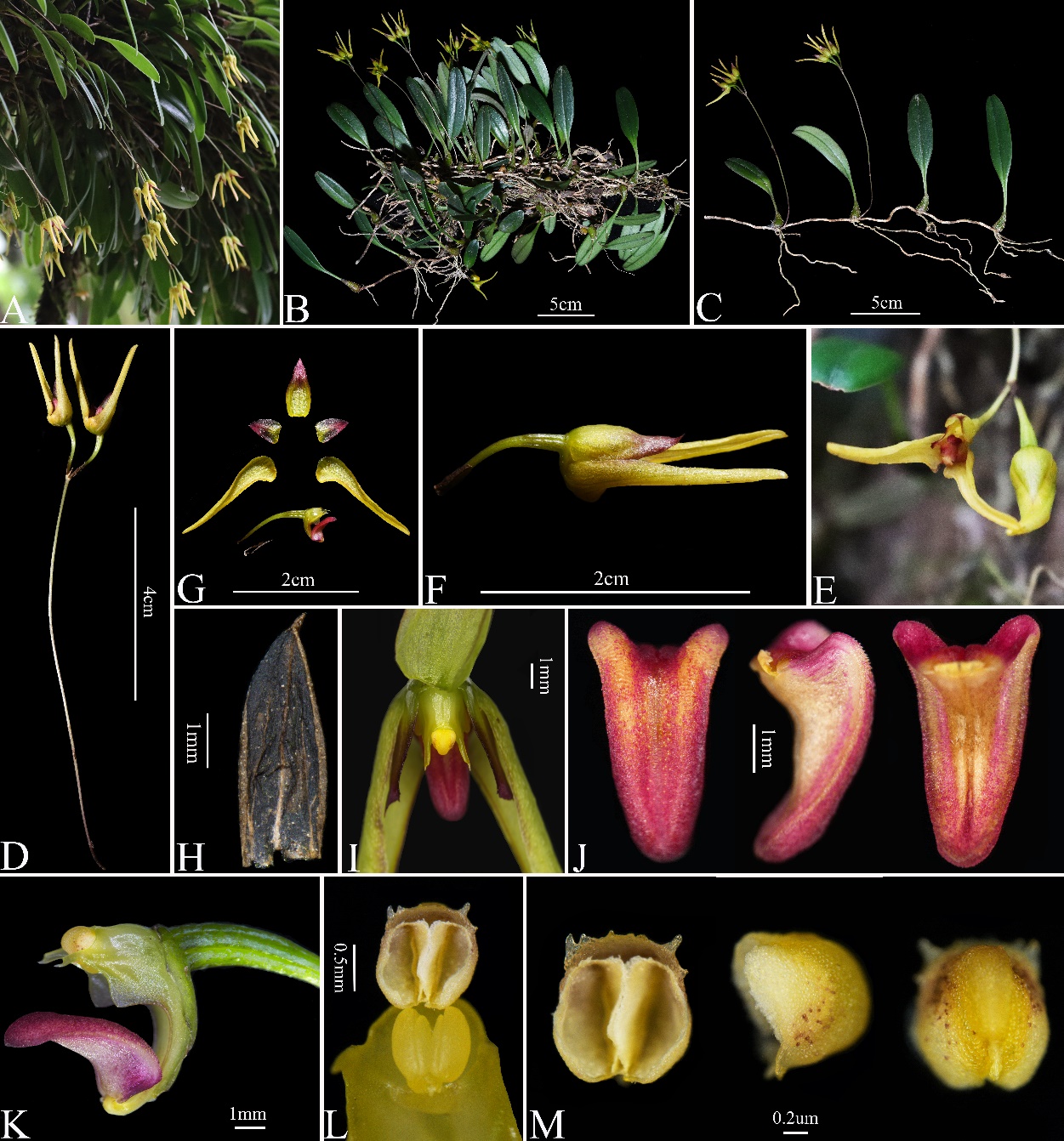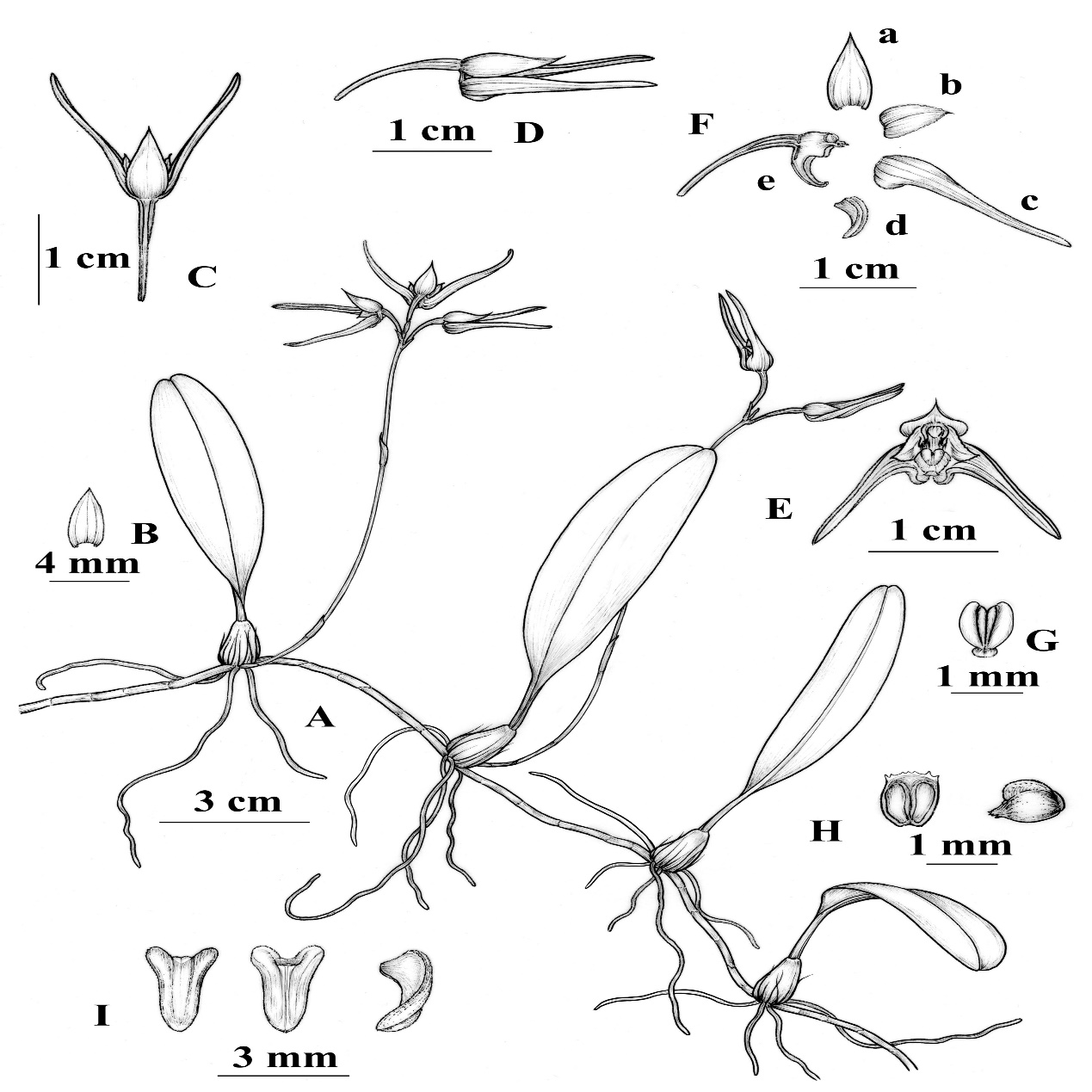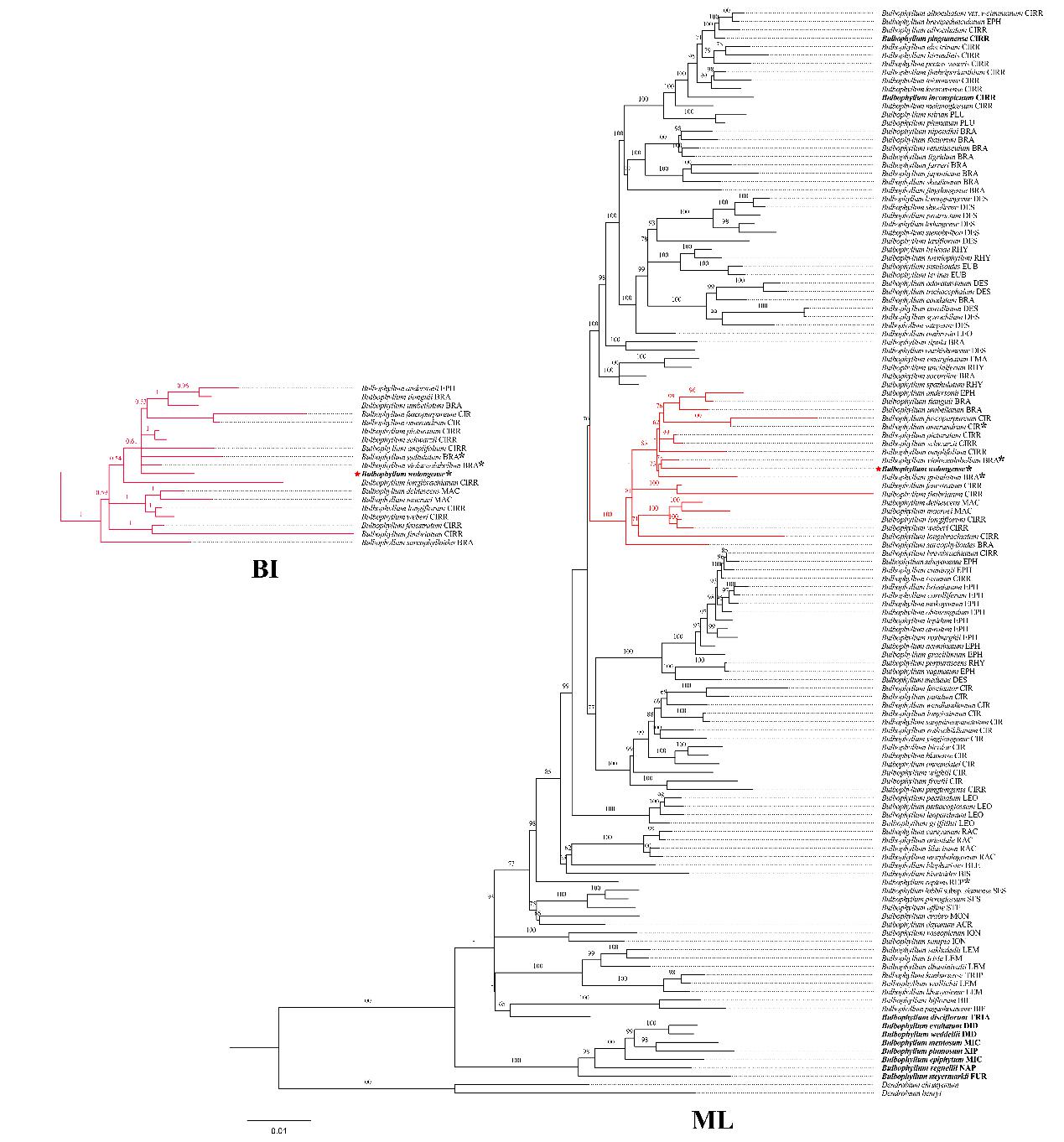Name:HU Guangwan
Tell:
Email:guangwanhu@wbgcas.cn
Organization:Wuhan Botanical Garden
A New Orchidaceae Species: Bulbophyllum wolongense
2023-09-06
Bulbophyllum wolongense G.W. Hu, Y.H. Cheng & Q.F. Wang, a new species from the family Orchidaceae, was discovered and jointly named by the research team led by HU Guangwan from Wuhan Botanical Garden of the Chinese Academy of Sciences and staff members from the Wolong National Nature Reserve in Sichuan Province, China. This is another formally published new species of Orchidaceae from Sichuan Province following Corallorhiza sinensis, Ponerorchis wolongensis, and Hemipilia yajiangensis. The related study, titled "Bulbophyllum wolongense, a New Orchidaceae Species from Sichuan Province in China, and Its Plastome Comparative Analysis" , was published in Ecosystem Health and Sustainability.
Bulbophyllum is one of the most species-rich genera in the family Orchidaceae, with a recognized number of species ranging from 1900 to 2200 worldwide. They are distributed from tropical Africa, Madagascar, the Americas, mainland Asia to Australasia, China is a biodiversity hotspot for this genus, with approximately 150 described species.
In October 2021, staff members from the Wolong National Nature Reserve discovered a new species of Orchidaceae during patrol activities near a cliff in a river valley around 1630 meters within the reserve. This plant was found to have pseudobulbs and yellow flowers growing epiphytically on the trunks of Taxus chinensis.
Through continuous tracking and observations of its growth in its native habitat, literature review, comparison with related species' specimens, molecular systematic research, and discussions with industry experts, it was eventually confirmed as a new species of the genus Bulbophyllum. The new species was named Bulbophyllum wolongense after its type locality in the Wolong National Nature Reserve.
Morphologically, Bulbophyllum wolongense bears some resemblance to Bulbophyllum omerandrum and Bulbophyllum reptans, both of which have yellow flowers, similar flower shapes, and sizes. However, it significantly differs from them in terms of inflorescence type, flower quantity on the inflorescence, sepal and petal margin structures, and morphology of the apical region of the rostellum.
Additionally, molecular phylogenetic analysis reveals the close relationship between Bulbophyllum wolongense and Bulbophyllum violaceolabellum and Bulbophyllum guttulatum, although it differs significantly from the latter two species in morphology. The discovery of Bulbophyllum wolongense is of great significance for biodiversity research in the Wolong area and provides further references for the identification, species formation, and evolution of the genus Bulbophyllum.
Bulbophyllum wolongense: Epiphytic herb. Rhizome creeping, semi-woody, with roots arising from the base of pseudobulbs. Pseudobulbs sparsely arranged on the rhizome, oblong-conical and inclined. Leaves leathery, lanceolate to obovate-lanceolate. Inflorescence emerges from the base of pseudobulbs, densely covered with purple-red spots; peduncle slender; bracts ovate or boat-shaped, sharply pointed at the apex, with three veins; pedicel with the ovary pale green; flowers yellow; sepals ovate-lanceolate, gradually tapering at the apex, entire margin, with five veins; lateral sepals lanceolate, blunt at the apex; petals ovate-triangular, with small sharp tips, purple-red with irregular small teeth along the edges; labellum fleshy, tongue-shaped, purple-red; column pale yellow-green, each side of the upper end with a spoon-shaped tooth, upper end of the column teeth nearly at a right angle, lower end forked and short-pointed; column wings extending forward in the middle, forming a nearly right-angled triangle; anther inclined, 2-locular; pollinia waxy, 2 pairs forming 4 globular masses; viscidium yellow with purplish-brown spots, helmet-shaped, almost truncate at the front end, irregularly notched at the edges, with fine papillae on the surface, and a curved crest-like ridge in the middle on the back. Flowering occurs from September to October.

Bulbophyllum wolongense (Image by Hui Jiang, Shuai Peng, and Yue-Hong Cheng)

Line drawing of Bulbophyllum wolongense (Drawn by Jing Tian)

ML tree (constructed based on ITS, Xdh, matK, and psbA-trnH fragments) (Image by WBG)